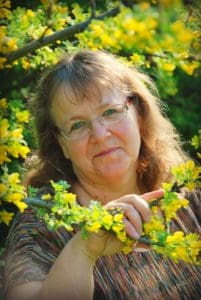Feeling the Shift. Member Spotlight: Monica Kreiner
Based in Alberta, Canada, Monica Kreiner is a part-time mediator who works predominantly on three mediation rosters: Alberta Justice Civil Court, Alberta Justice Family, and Canadian Farm Debt Mediation Service. Monica loves mediation for the capacity it has for changing the mindsets of those involved and hopes that it will one day be better understood by the public at large.
Road to Mediation

Monica began her career in education, working for a number of years at a community college. There, she was involved in union activities, which was where she was first exposed to mediation. The college housed the faculty association, the staff association, and the management, who each volunteered two members to receive mediation training in case of a dispute between associations. She became very interested in mediation and began taking courses to develop her skills to better serve her role as a union steward between the associations to resolve their conflicts. She found mediation fascinating and decided to spend a lot of time working on mediation to become a chartered mediator when she left the college to make a career change.
Once she was certified, she began working with the civil court, mediating small claims disputes a few times a month. After a couple of years of this, she also joined the Alberta Justice Roster, where she does family mediation, which largely entails divorce and separation work. This experience got her more active in mediation, and she became an advocate for promoting mediation in her community. She also began some private mediation, elder mediation, and oil and gas mediation, among other things, demonstrating that she is a versatile generalist mediator. Monica also works with the Farm Debt Mediation Service, a national program in Canada that works to come to resolutions in disagreements between farmers and debtors.
Currently, Monica is running for the county council, a role which she feels would put her mediation skills to good use. “I’ve heard people say ‘‘Boy, that’s what we need is a mediator on the county council.’ Because you’re sitting with a table of nine people with different views and working together with different groups to find consensus.” Monica finds great value in the skills she has gained through mediation and finds them to be applicable to multiple areas of her life. Coming from a small community, Monica was searching for ways to expand her network and horizons when it came to mediation, and thus joined MBBI to meet others in her field. As she says, “working in a rural, northern area, you have to look outside of yourself for connections.” However, she finds connections in the Indigenous Cree community, which she married into. She finds that their community-based practices of conflict resolution have parallels to her mode of mediation and that they can work together well.
Feeling the Shift
For Monica, the most rewarding moment in a mediation process is “feeling the shift,” which she describes as a physical feeling where it becomes clear that the parties have decided to put their biases and priorities aside in order to cooperate and come to some consensus. She works a large amount with separating couples, who often have to put their interests aside in order to reach the best possible solution for any children involved. After this shift occurs, the parties can often take the reins of the mediation themselves and can reach a conclusion on their own terms. Monica also finds her work with the Farm Debt Service extremely rewarding, as it often involves multi-generational families and their livelihoods. She loves being able to help parties reach a conclusion that benefits all involved as much as possible, and being able to see the impact of her work on families and businesses. However, Monica’s mediation career has not been without its challenges. Especially difficult, she says, is when parties pull back from efforts to engage them and refuse to open their minds to the discussion. When this happens, it prevents the shift from occurring, as one or more parties are stopping themselves from changing their mindset. This issue has inspired Monica’s interest in counseling, and she is interested in finding a way to combine mediation with counseling to hopefully help people get past the barriers preventing them from opening themselves up to the process.
Understanding Mediation
Going forward in the field of mediation, Monica hopes that there will grow to be a better general understanding of what mediation is. In the past, she has been frustrated by the lack of understanding of mediation, especially as opposed to the legal system. She hopes that “people develop an understanding of what mediation really is. It’s about people taking responsibility and solving their own problems, not about trying to fit into a legal process.” Monica explains that mediation is an approach that tailors a solution to the parties involved, rather than trying to fit a given situation into the corresponding legal framework and its pre-set outcomes. Furthermore, lawyers have more training in an adversarial approach than a constructive and cooperative one, which can sometimes undermine the purpose of mediation as a beneficial method of consensus-building. Ultimately, Monica hopes that people eventually come to understand what mediation really is. In her eyes, “it’s about self-determination, and about finding a way forward that makes sense for the people involved.”
Article by Tess Hargarten, MBBI Writer
